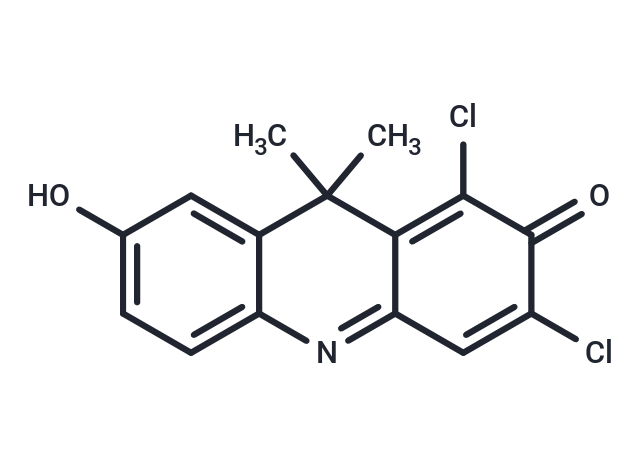Shopping Cart
Remove All Your shopping cart is currently empty
Your shopping cart is currently empty
DDAO is a promising near-infrared (NIR) red fluorescent probe with a long emission wavelength (λem = 656 nm) and a tunable excitation wavelength (600-650 nm). It can be designed for detecting the activities of various enzymes such as β-galactosidase, sulfatase, protein phosphatase 2A, carboxylesterase 2, human albumin, and esterases.

| Pack Size | Price | USA Warehouse | Global Warehouse | Quantity |
|---|---|---|---|---|
| 10 mg | $42 | In Stock | In Stock | |
| 1 mL x 10 mM (in DMSO) | $46 | In Stock | In Stock |
| Description | DDAO is a promising near-infrared (NIR) red fluorescent probe with a long emission wavelength (λem = 656 nm) and a tunable excitation wavelength (600-650 nm). It can be designed for detecting the activities of various enzymes such as β-galactosidase, sulfatase, protein phosphatase 2A, carboxylesterase 2, human albumin, and esterases. |
| Cell Research | Instructions I. Reagent preparation: 1. Preparation of stock solution: DDAO is dissolved in an appropriate solvent (such as DMSO, ethanol or water), and the stock solution is prepared according to the specific needs of the experiment. 2. Preparation of working solution: The concentration of the stock solution is usually 1 mM (but the concentration can be adjusted according to the experiment). II. Operation steps 1. Enzyme activity detection: Sample preparation: It is necessary to prepare the sample to be tested (such as cells, tissues or solutions) and the corresponding enzyme. For example, when detecting β-galactosidase, β-galactoside can be used as a substrate. 2. Reaction steps: 1) Add DDAO fluorescent probe solution to the sample solution. 2) According to the experimental requirements and enzyme activity, adjust the pH value (usually use an appropriate buffer solution). 3) Incubate the sample at an appropriate temperature for a certain time, usually 10-60 minutes, and the specific time is adjusted according to the type of enzyme and experimental requirements. 4) During this process, DDAO will react with the target enzyme to generate a fluorescent signal. 3. Fluorescence detection: 1) Use a fluorescence spectrophotometer or fluorescence microscope for detection, set the excitation wavelength at 600-650 nm and the emission wavelength at 656 nm. 2) Evaluate enzyme activity based on changes in fluorescence intensity. 3) Calculate the speed or activity level of the enzyme reaction, and usually require control group data for comparison. 3. Data analysis: 1) Based on the measured changes in fluorescence intensity, a standard curve can be drawn and the activity of the enzyme can be evaluated by comparing the fluorescence values of the sample and the control group. 2) Different substrates and optimized experimental conditions may be required for the activity of different enzymes. Notes: 1. Solubility: Ensure that DDAO can be completely dissolved in an appropriate solvent and avoid excessive concentrations, which may have toxic effects on cell or enzyme activity. 2. Photostability: DDAO is light-sensitive, so strong light exposure should be avoided during storage and operation to prevent fluorescence bleaching. 3. Enzyme selection and optimization: Different enzymes may require different substrates or reaction conditions, so when using them, they need to be optimized according to the properties of the specific enzyme. |
| Molecular Weight | 308.16 |
| Formula | C15H11Cl2NO2 |
| Cas No. | 118290-05-4 |
| Smiles | CC1(C)C2=C(Cl)C(=O)C(Cl)=CC2=Nc2ccc(O)cc12 |
| Relative Density. | 1.46g/cm3 |
| Storage | keep away from direct sunlight | Powder: -20°C for 3 years | In solvent: -80°C for 1 year | Shipping with blue ice/Shipping at ambient temperature. | |||||||||||||||||||||||||
| Solubility Information | DMSO: 10.42 mg/mL (33.81 mM), Sonication is recommended. | |||||||||||||||||||||||||
Solution Preparation Table | ||||||||||||||||||||||||||
DMSO
| ||||||||||||||||||||||||||
| Size | Quantity | Unit Price | Amount | Operation |
|---|

Copyright © 2015-2025 TargetMol Chemicals Inc. All Rights Reserved.